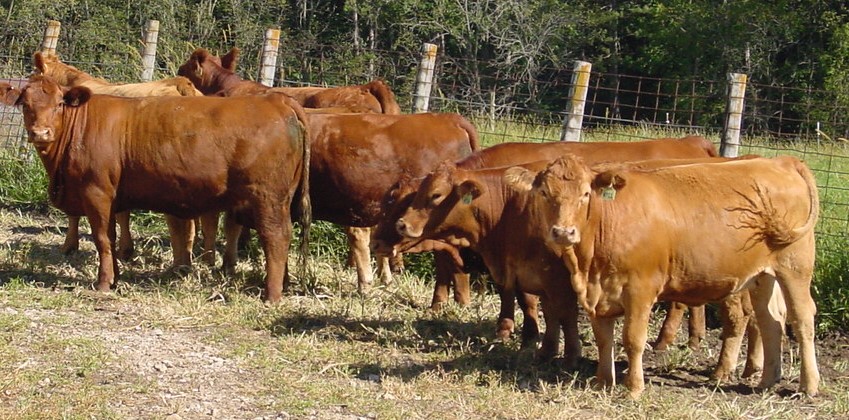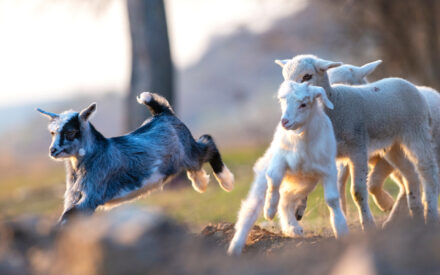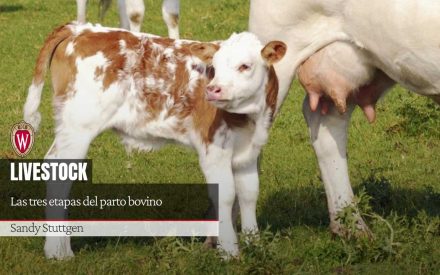
This article appears in the February 2024 issue of the Wisconsin Agriculturalist.
“Going once, twice; sold!” As the gavel falls on your cattle purchase, do you really know what you bought? What is their health history? What diseases are they tested negative for? When were they last vaccinated or dewormed and what products were used?
Herd additions have inherent risk. Every movement of cattle onto your cow-calf operation—be they cows, heifers, calves, or bulls—brings biosecurity risks to your farm. Prior to transport, animals can appear normal and healthy, but they may be incubating or carrying diseases. They are likely to break with disease following the stress of transportation and adjusting to their unfamiliar environment. It is critical to isolate new additions so that any sickness they break with is not shared with your home herd.
Isolation means eliminating nose-to-nose contact between the incoming cattle and the farm’s resident cattle for 30 days and feeding and caring for new additions after the home animals to reduce disease spread. Clean and disinfect feeding and handling equipment and your footwear before and after handling new additions.
Ask for test results before purchasing animals and/or test new additions for diseases that could jeopardize the herd.
- Require and be willing to value negative test results for persistently Infected Bovine Viral Diarrhea (BVD-PI), Bovine Leukosis Virus (BLV), Brucellosis and Johnes Disease.
- To protect your herd from venereal diseases that may be carried by new additions, purchase virgin bulls and heifers from herds with documented strategies for preventing trichomoniasis (trich) and vibriosis (vibrio). Along with documented control strategies for the source herd, negotiate non-virgin bulls and female cattle purchases to be contingent upon testing negative for trich and vibrio. If possible, avoid having new bull(s) run with everyone. Artificially inseminate purchased cows and heifers, or if naturally breeding, keep them in a separate group for at least one season.
- Inspect the hooves of those you are considering purchasing for hairy heel warts and ask about their prior exposure to it.
- Use fecal egg counts to test incoming animals’ worm status.
You need veterinary involvement. Some parts of the state have fewer veterinarians – which means you may have to search for the veterinarian who will work with your operation. Develop your Veterinary Client Patient Relationship (VCPR) and leverage that relationship to evaluate your herd’s disease resistance. Together, you can design the vaccination and nutrition program to boost herd immunity, identify the facility’s contribution to health from ventilation, bedding, and protection from weather extremes, and evaluate the potential for spreading disease throughout your operation.
Lastly, as the sound of the gavel hitting the auction block fades, do not forget about tire and trailer biosecurity risks. All transport trucks and trailers should follow a designated path within your operation to loading/unloading areas. Hardy pathogens will ride on tires and trailers between auctions and operations.
Reviewed by Bill Halfman, UW-Madison Division of Extension Beef Specialist
Citation: Arnold, Michele. Bovine Venereal Diseases – Should You Be Concerned. January 2023. UK Veterinary Diagnostic Laboratory. Accessed December 7, 2023, https://u.osu.edu/beef/2023/01/25/bovine-venereal-diseases-should-you-be-concerned/

 Thanks for Your Deworming Management
Thanks for Your Deworming Management Importance of Traceability on Swine Farms
Importance of Traceability on Swine Farms Biosecurity for bringing home new sheep and goats
Biosecurity for bringing home new sheep and goats Las tres etapas del parto bovino
Las tres etapas del parto bovino


